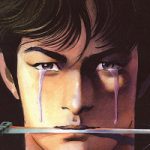Shōjo manga
Regions: Japan

Shōjo manga is a type of Japanese comics aimed at female readers aged 9-17 years. While it primarily focuses on romance, shōjo manga is in fact a very flexible category, embracing such genres as historical drama, fantasy, sci-fi, sport, etc. It is most often published in serialized form in widely circulated weekly or monthly magazines (so called “manga zasshi”) such as Ciao, Hana to yume (Flowers and Dreams) or Ribon.
The origins of contemporary shōjo manga can be traced to the so-called “girls‘ magazines” (shōjo zasshi), which reached the peak of their popularity in the early years of the Shōwa period (1926-1989). These magazines, oriented at middle class-teenage girls, focused mainly on fashion trends, aesthetics and literature, but some included short comics panels, for example, Little Kurumi (Kurukuru Kurumi-chan) by Katsuji Matsumoto (1904-1986), serialized in Shōjo no Tomo in 1938-1940. However, the pre-war comics stories featuring deliberately cute characters were rather simple and the introduction of story manga happened only after the end of WWII, when Osamu Tezuka (1928-1989) published his series Princess Knight (Ribon no kishi) in 1953. Inspired by Tezuka, many other comics authors embarked on drawing more sophisticated manga for the then-most popular shōjo magazines Shōjo Club, Shōjo Book or Ribon; some created mainly comedy series, while others – for example Tetsuya Chiba (*1939) with his acclaimed hits Mother’s Violin (Mama no baiorin, 1958-1959) or 1·2·3 and 4·5·Roku (Ichi ni san to shi go Roku) – focused on family melodrama. Although initially there were considerably more men authors, by the end of 1950s several young women, including Masako Watanabe (*1929), Miyako Maki (*1935), Hideko Mizuno (*1939) and Machiko Satonaka (*1948), became very popular with readers and inspired a whole new generation of female comics creators, who currently represent a vast majority of shōjo manga authors. During 1960s the girls’ comics gradually became more open to romantic stories, often set in exotic locations, such as Mizuno’s historical love story White Troika (Shiroi Toroika, 1964) or Satonaka’s My Johnny (Watashi no Jonii, 1968). However, in 1966 former Mizuno’s assistant Yoshiko Nishitani (*1943) shifted focus onto romantic stories whose protagonists were ordinary Japanese teenagers: her story Lemon and Cherry (Remon to Sakuranbo) became the prototype of today’s typical shōjo romance in highschool settings (gakuen manga). The 1960s also saw the origin of the magical girl (mahō shōjo) genre started by Akko’s Secret (Himitsu no Akko-chan, 1962) by Fujio Akatsuka (1935-2008), as well as the sports genre, encouraged by Japan’s success at the Summer Olympic Games in 1964; among the most popular series included the volleyball series Attack no. 1 (Attaku no.1, 1968-1970) by Chikako Urano (*1946). In 1970s shōjo manga further developed thanks to the so-called Nijūyonengumi group, whose members’ work was characterised both by advanced artwork and promotion of less explored genres (sci-fi, fantasy etc.) and serious topics such as gender issues, mental illness or death; however, more easy-going romantic comedies – known also as “girlie comics” (otomechikku manga) – flourished as well. By the 1980s shōjo manga gave rise to women’s comics (josei manga) – a separate category of comics aimed at older female readers.
— Anna Krivankova
See Also: Tetsuya Chiba, Riyoko Ikeda, josei manga, Nijūyonengumi, Osamu Tezuka
Further Reading
- Gravett, Paul. Manga: Sixty Years of Japanese Comics. London: Laurence King, 2004.
- Schodt, Frederik L. Dreamland Japan: Writings on Modern Manga. Berkeley, Calif.: Stone Bridge Press, 1996.
- Toku, Masami. Shojo Manga! Girl Power!: Girls’ Comics from Japan. Chico,


